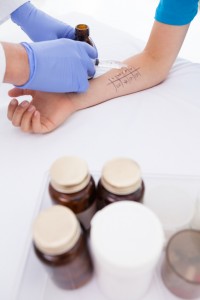Bacteria in gut
BEST SELLING PRESCRIPTION DRUGS. These drugs are changing our gut bacteria. What does this mean when we’re after good gut health? EVERY YEAR there’s a list of the top selling prescription drugs. (Read on to find out what these are).
Nutrition expert Susannah assesses gut health — our gut health reflects our overall health.
At our London clinics we find patterns in YOUR HEALTH STORY. What does this mean exactly? Gut health and gut bacteria is a topic of overwhelming interest in functional healthcare right now.
WHY DOES THIS MATTER?
The types of bacteria in our gut are summarised here. Gut bacteria are either growing in number or dying.
Our gut microbiome depends on 1) nutrition 2)lifestyle 3) environment. READ ON for 7 SIGNS we have an UNHEALTHY GUT
Gut bacteria rely on what we’re feeding them. The good bacteria we hear about is the one we try to cultivate. More about good and bad gut bacteria and gut health probiotics can be found here.
The top 25 best selling prescription drugs
The top drugs prescribed to the world include cholesterol-lowering drugs or statins. Also, drugs for chronic pain. Top of the chronic pain list are Humira an anti-inflammatory for arthritis and oxycontin and vicodin. These tally high for pain relief consistently. Insulin glargine injection for type 1 diabetes, metformin for type 2 diabetes and asthma medications like albuterol also rank in the top ten. Several antacids like omeprazole and other drugs for indigestion always rank high.
Research firm IMS compiles a rolling 12-month history in the US. The pharmaceutical industry publication Genetic Engineering and Biotechnology News (GEN) do as well.
Gut Health
Gut health refers to the function or dysfunction of the gastrointestinal (GI) tract.
- The effective digestion and absorption of food.
- The absence of GI illness.
- Normal and stable intestinal microbiota.
- Effective immune status and a state of well-being.
How do we maintain gut health? Any impairment of the Gut lining can increase the risk of developing infectious, inflammatory and functional GI diseases. An example of gut lining impairment is leaky gut syndrome.
As well, impairment can increase risk of extra-intestinal diseases, such as immune-mediated and metabolic disorders. GI barrier impairment can increase risk of immune-mediated & metabolic disorders.
Less clear, however, is whether GI discomfort in general can also be related to GI barrier functions. In any case, methods of assessing, improving and maintaining gut health -related GI functions are of major interest in preventive medicine. It is worth looking out for your body’s bad gut health symptoms.
A healthy gut
When we feel something’s not quite right, often it’s more than just a gut feeling. As powerful as those are, our precious health calls for understanding and finding solutions. The more we know, the more we can do. Signs of an unhealthy gut are below.
- You have a lowered immune response. 70-80% of our immunity to infection and disease is controlled by your gut microbiota. [tweetthis]70-80% of your immunity to infection and disease is controlled by your gut microbiota[/tweetthis] Your immune system launches a response, resulting in inflammation. This response might include recent developments of food allergies or food intolerances that you are experiencing later on in life.
- You experience unexplained changes in your weight. Bowel and bladder habits are affected. E.g. IBS, digestive issues such as gas and bloating.
- You suffer from tiredness that is unexplained. As featured by the Mayo Clinic, studies are connecting bacteria to its effect on energy absorption. “Researchers have identified a difference in the types of bacteria found in a lean person’s gut versus those that live in the gut of someone who is obese. The amount of energy is small, but researchers wonder if over time this could be a factor in weight maintenance.”
- You suffer from mood swings, anxiety disorders, depression, poor memory, poor concentration, ADHD or ADD. These may be due to inflammation in the gut. The gut-brain axis explains this.
- You have or have had autoimmune disease. Autoimmune diseases examples are alopecia areata, Coeliac disease, RA, MS, vilitgo, Raynauds, SLE, reactive arthritis, Addison’s disease, Psoriasis etc.
- You have skin conditions that are recurrent. Typically your skin issues are non responsive to medication. they don’t respond well to medical grade topical solutions and treatments. Or, they are a temporary solution, until the next outbreak. An example is adult acne – acne vulgaris or eczema or rosacea
- You have diabetes or insulin resistance. This can be affecting your fertility, whether you are male or female.






















